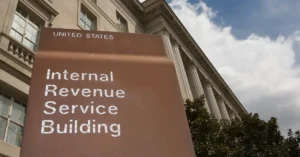Key Takeaways:
- The substantial understatement penalty applies if a taxpayer understates their tax liability by 10% or $5,000, whichever is more
- You could get this penalty if you:
- Understate income to lower your tax liability
- Overstate tax deductions
- Eight ways to avoid the substantial understatement penalty:
- Never understate the income you earned
- Make sure you qualify for all deductions you take
- Follow all tax laws and rules closely
- Consider your relief options
- Dispute the penalty
- Set up a payment plan
- File and pay on time
- Work with a seasoned tax professional
- Other tips include keeping organized records, factoring in penalty interest, and checking that all math is correct on your tax return
Paying taxes is stressful for some Americans, especially when they fear they won’t be able to pay their tax bills. This problem can unfortunately lead to negligence or intentional mistakes on their tax returns. The IRS will issue penalties when it uncovers a mistake, such as the understatement of income or inaccurate deduction amounts.
It’s easy to stay in good standing with the IRS, however, even if you fear your tax bill. The agency has options for taxpayers facing hardship, or you can apply for a payment plan to lift some of the burden. The IRS just wants people to be honest about what they earned and what their situation is.
One significant penalty to put on your radar is the substantial understatement penalty. This applies when a taxpayer is above a certain threshold for understating the amount of tax they owe on their tax return because of underreported income. The IRS puts a large penalty on this kind of misrepresentation.
Learning more about the substantial understatement penalty can help you avoid it and prepare your taxes with less stress. This guide covers everything you need to know.
How the Substantial Understatement Penalty Works
The substantial understatement penalty is a type of accuracy-related penalty the IRS issues. The agency gives these fines if a taxpayer fails to pay their complete tax liability that appears on their tax return. The IRS says that underpayment occurs “if you don’t report all your income or you claim deductions or credits for which you don’t qualify.” It essentially happens when you state that your income is lower than it really is.
Some understatements are considered “substantial” and are more serious. A substantial understatement is when a taxpayer understates their tax liability by 10% or $5,000, whichever is more. Taxpayers who claim the qualified business income deduction may receive the penalty if they understate their tax liability by 5% or $5,000, whichever is more.
The other way a taxpayer will get an accuracy-related penalty is if they are found to be negligent. It’s also worth noting, however, that a taxpayer will receive a penalty if they go over the substantial understatement threshold (listed above) even if the IRS doesn’t find them negligent.
The next element to consider is the amount of the accuracy-related penalty. It equals 20% of the portion of the underpayment that occurred because of the taxpayer’s negligence or disregard. The substantial underpayment penalty specifically equals 20% of the portion of the underpayment that was understated on the tax return.
When You Would Get the Substantial Understatement Penalty
The substantial understatement penalty is a common fine the IRS issues to taxpayers each year. The goal is to stop people from paying less tax than they owe and catching instances of negligence or misrepresentation of income. Here are the scenarios when you would have to pay this penalty:
Underreporting Earned Income
Some taxpayers believe they should try to lower their income however possible to avoid taxes. They may falsely report a lower number than they actually earned during the year so they owe less to the IRS.
This is never a wise move, as the IRS assesses the records it receives and will audit someone if they suspect an understatement. The agency will issue the steep penalty once they find the understatement to be substantial. This means understating income could lead to an even bigger bill than if you had just paid what you owed initially.
Overstating Tax Deductions
Another way taxpayers try to avoid paying tax is overstating their deductions. Taxable income is reduced by deductions, so they try to include as many as possible, at high amounts, to lower that reported amount. This method, however, can also lead to an accuracy-related penalty.
Example: A single-filer taxpayer completes their tax return, which indicates they have $3,000 in taxes due for the year. The IRS takes a deeper look and uncovers that the taxpayer should have had a tax liability of $9,000. The understatement of $6,000 equals 66% of what they should have paid and is more than $5,000. The 20% understatement penalty would then be $1,200.
The substantial understatement penalty can be very costly, as this example indicates. Always report income and deductions accurately on your tax return. Talk to a tax expert if you have questions about what to report or how to deal with your tax liability.
Eight Ways to Avoid the Substantial Understatement Penalty
The substantial understatement penalty is itself a substantial cost for any taxpayer. Fortunately, there are plenty of ways to avoid this fee. Follow these steps when you want to avoid accuracy-related penalties on your taxes:
1. Never Understate the Income You Earned
The first and most important step is to never report a false amount of income you earned for the year. Include everything you earned, even if the payer didn’t send you a Form 1099 or other tax form. All of your income is taxable. Reporting accurate numbers requires keeping detailed records of every paycheck or payment you receive. Double-check your math before filing your tax return to avoid any mistakes and subsequent issues.
2. Make Sure You Qualify for All Deductions You Take
Next are your deductions. The tax deductions you qualify for can change from year to year with ever-changing tax laws. Never try to claim a deduction you don’t qualify for or a higher deduction than is accurate.
3. Follow All Tax Laws and Rules Closely
The IRS considers a taxpayer to be negligent if they didn’t make a reasonable effort to comply with tax laws or didn’t use ordinary and reasonable care when preparing their tax return. A taxpayer is considered to have disregarded laws when they intentionally, recklessly, or carelessly ignored rules and regulations. Your responsibility is to file your tax return with the most accurate information so the IRS never finds any discrepancies after auditing your return.
4. Consider Your Relief Options
You may be charged with a penalty when you tried to avoid doing something wrong. The IRS recognizes this. Sometimes the agency may be able to remove or reduce a penalty if you can show you acted in good faith or show reasonable cause for why you couldn’t meet your tax obligations. Reasonable cause and good faith may be that you tried to report the correct tax, the tax issue was very complicated, you don’t have much knowledge of tax law, or you tried to get help from a tax professional.
5. Dispute the Penalty
Sometimes taxpayers may disagree with the IRS’s conclusions. You are allowed to dispute a penalty in this case. You will have received a notice about your accuracy-related penalty. At the top of this notice is a toll-free phone number and other contact information where you can call the IRS or send a letter disputing the penalty and providing your reasoning. Send in any documents that support your claims so the IRS can see where the mistake happened.
6. Set up a Payment Plan
You have options if you can’t pay your tax bill. Don’t understate your income because you’re worried you can’t pay. You can apply for a payment plan with the IRS in which you’ll agree to pay a set monthly amount for a certain period until your bill is paid off. Payment plans help you avoid paying current penalties or incurring future penalties. You just need to be honest about your situation, and the IRS will usually try to help you.
7. File and Pay on Time
Don’t make your situation worse by getting hit with additional penalties on top of your substantial understatement penalty. File your tax return and pay your tax bill on time –otherwise, you will receive a failure-to-file or failure-to-pay penalty, or both. You may have already understated your income and received a notice about a penalty. Follow the instructions closely on your notice and pay the penalty right away to avoid additional interest costs. You want to get yourself back into good standing with the IRS as soon as possible.
8. Work With a Seasoned Tax Professional
The great news is you don’t have to do any of this alone. Work with a tax professional you can trust who will advise you and handle your tax return details for you. This ensures you are following all tax laws, reporting your income correctly, and taking deductions and credits you qualify for.
Following these steps closely will help you file and pay properly – and avoid penalties. Remember that you should never try to get away with something when it comes to your taxes. Talk to a tax attorney if you find yourself in a challenging situation with the IRS.
Other Tips for the Substantial Understatement Penalty
Accuracy-related penalties can cost you thousands of dollars depending on how big of a mistake you made on your tax return. These mistakes lead to time losses for everyone, including the IRS when they have to audit your return and you when you have to respond to notices and pay more money. Here are a few more tips to help you:
- Interest accrues on IRS penalties. It accrues until the balance is paid in full. Interest can’t be removed or reduced unless the penalty is removed or reduced. Interest costs can add up quickly, so it’s not just the penalty itself you have to worry about.
- Always double-check your math. It’s easy to enter something wrong, but doing so leads to all kinds of headaches, financial and otherwise.
- Have a plan for keeping tax records all year. Consider using software like QuickBooks or even an Excel spreadsheet. Track your income and expenses so you have everything ready in the spring for tax time. Staying organized helps you ensure accuracy and efficiency. You will have a clear trail of proof if the IRS ever questions anything.
- Read up on your situation. Small business owners, entrepreneurs, and freelancers have more tax concerns than regular W-2 employees. Research tax laws no matter your work situation. The IRS has an online library of material on topics you may have questions about.
The IRS is feared by many taxpayers, but as long as you follow the laws, stay transparent, and respond quickly, you can stay in good standing. Tax laws are complicated, so you should always talk to an expert when you’re not sure what to do.
Reach Out to Silver Tax Group for Tax Assistance
IRS penalties are never something you want to have to deal with. The substantial understatement penalty can be particularly high depending on your misreported income. You hopefully now understand the implications of understatement and how to avoid this and other accuracy-related penalties.
The team of tax attorneys at Silver Tax Group is ready to help you through these issues. We can ensure you never underreport your income or underpay. We’ll also guide you forward if you receive a notice for a substantial understatement penalty. We can help you understand your relief options and advise on whether you need to apply for a payment plan.
We’re here to help regardless of the tax issue you’re facing. Reach out to Silver Tax Group today to speak to a tax expert about the substantial understatement tax penalty.
Substantial Understatement Penalty FAQs
What is the Substantial Understatement Penalty?
The Substantial Understatement Penalty is a penalty imposed by the IRS on those who substantially underestimate their taxes owed.
When does this Substantial Understatement Penalty apply?
This penalty applies when an understatement of tax liability is greater than 10% of the correct tax amount, or when the understatement is greater than $5,000.
Are there any exceptions to Substantial Understatement Penalty?
The penalty does not apply to understatements resulting from positions taken in good faith with substantial authority, and prior to January 1, 2019 reduced penalties may be available if it can be shown that there was reasonable cause for underestimating taxes owed and there was no pattern of negligence involved with preparing the original return.
What are some ways to avoid the Substantial Understatement Penalty?
Taxpayers should make sure they include all sources of income and deductions on their returns and accurately report any estimated tax payments made throughout the year.
If a taxpayer discovers a mistake after filing their return, they should file amended returns as soon as possible and take steps to pay any unpaid taxes in order to minimize potential penalties for late payment or non-filing due dates that may have been passed earlier in the year prior to filing the amended return with corrections.








